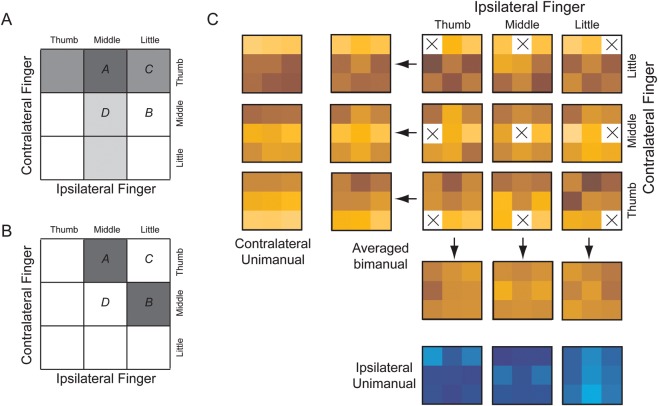Figure 6.
Nonlinear tuning of voxels for bimanual actions. (A) Tuning function of a hypothetical neural unit for the 9 task conditions of a bimanual task. The activity of this unit (indicated by the gray shading) is determined by a linear combination of a tuning function for the ipsi- and contralateral fingers. Any change in the units output would influence task condition A mostly, but would generalize to conditions C and D. A system that has only linear units could, therefore, not learn a task in which a different output has to be produced for combinations A and B than for bimanual finger combinations C and D. (B) Instead, the control of such a task requires cortical circuits with nonlinear combinations of contra- and ipsilateral actions. (C) Average tuning functions of the voxels in the functional bimanual ROI in precentral gyrus, averaged across hemispheres and participants. Each 3 × 3 matrix indicates the activity of 9 groups of voxels, which were selected based on the bimanual combination for which they are most highly activated (black cross). The activity in the other conditions can then be averaged across the contralateral or ipsilateral finger to reveal the presence of consistent tuning across the bimanual actions. For the contralateral finger, this tuning is highly similar to the one observed for unimanual actions. For the ipsilateral finger, no tuning is apparent. Nonlinear tuning would be apparent as an interaction effect in this 2-factorial design.

